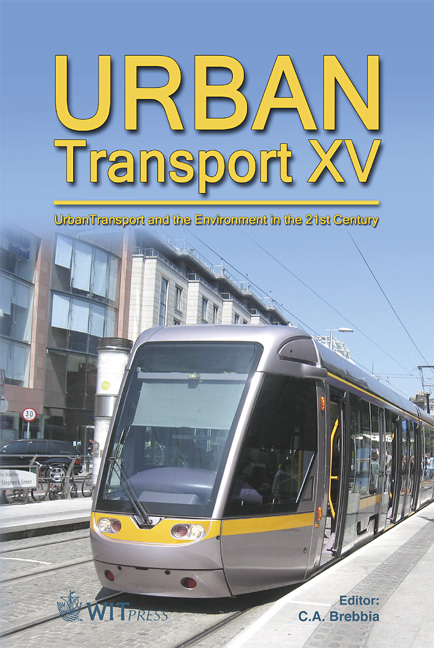Changes In New Zealand Transport Mode Choices Over Time By Size Of City
Price
Free (open access)
Transaction
Volume
107
Pages
9
Page Range
13 - 21
Published
2009
Size
284 kb
Paper DOI
10.2495/UT090021
Copyright
WIT Press
Author(s)
M. Keall, R. Chapman & P. Howden-Chapman
Abstract
New Zealand cities have similarities with many North American and Australian cities in terms of their form. Typically, they are characterised by urban sprawl, as most private housing consists of free-standing dwellings with a relatively large section (yard). This form of development potentially leads to dependence on cars as a mode of transport, generating in New Zealand some of the highest carownership rates in the world. In the light of concerns about global warming, recent research has highlighted that the nature of urban development is a major contributor to climate change and that changes in urban form offer the potential to cut greenhouse emissions. Analysis of New Zealand travel survey data over the period 1989-2006 showed a disturbing trend nationally of increasing use of cars, accompanied by large decreases in cycling and walking for children aged 5-14. This poses concerns not only about the negative environmental effects of driving, but also about New Zealand’s growing obesity epidemic, to which sedentary lifestyles contribute. The current study looked at travel survey data according to city size, showing that the reduction in children’s walking and cycling appears to be a problem that is largest in the bigger cities, but still a concern in smaller cities. In contrast, small towns and rural areas showed no such reduction in children’s walking and cycling. This contrast in transport mode choices is hypothesised to be associated with changes in the urban form of the larger cities over the time period studied, which may not have been so apparent in smaller urban centres. Further testing of this hypothesis is required to identify other societal changes happening concurrently, but the fact that small towns and rural areas have not seen a reduction in active transport choices suggest urban form as an influence, the implications of which need to be considered by town planners. Keywords: urban form, active transport modes, mode choice, urban sprawl.
Keywords
urban form, active transport modes, mode choice, urban sprawl





